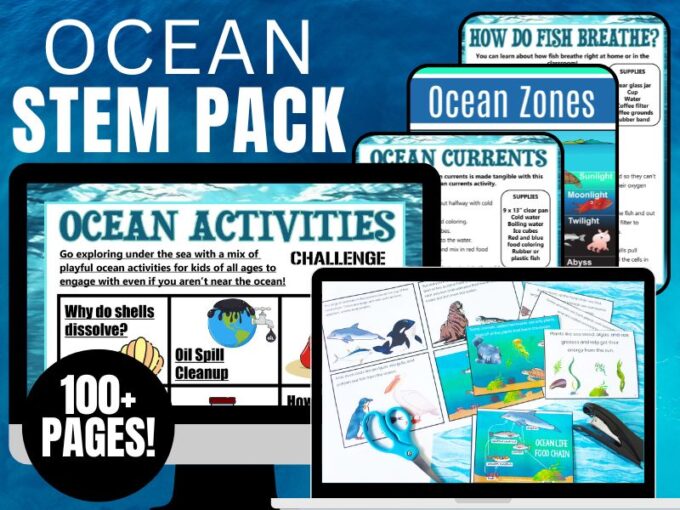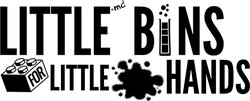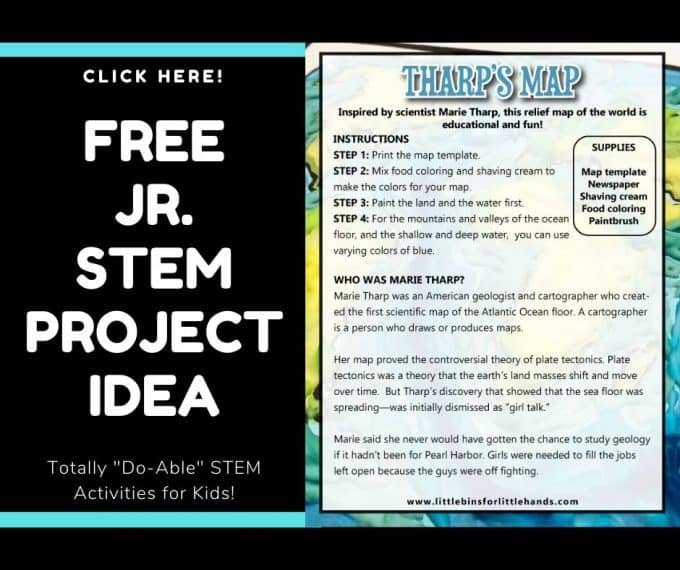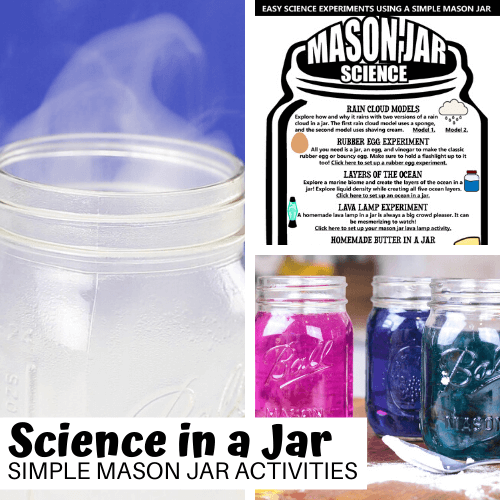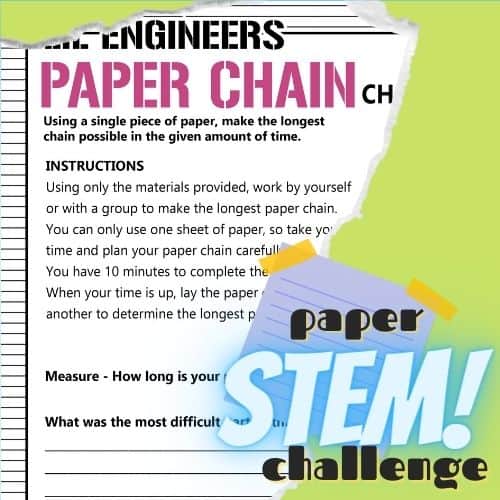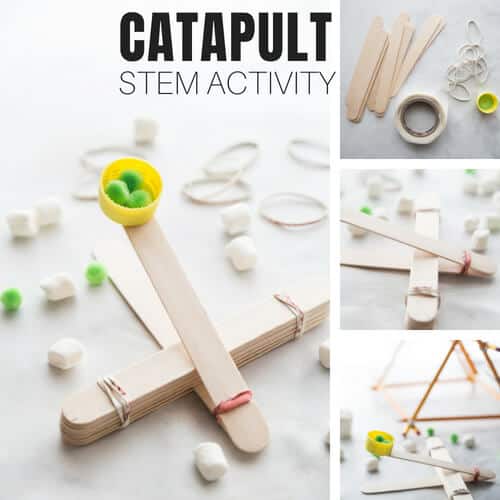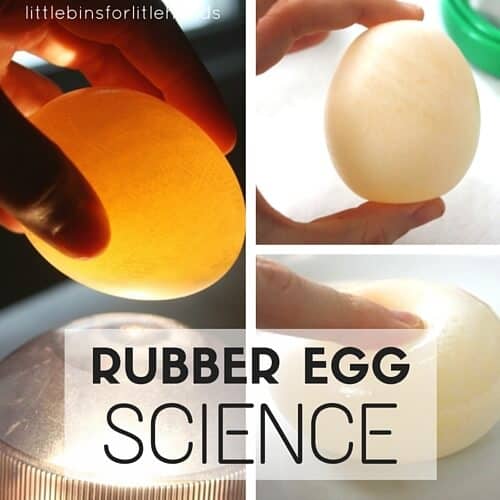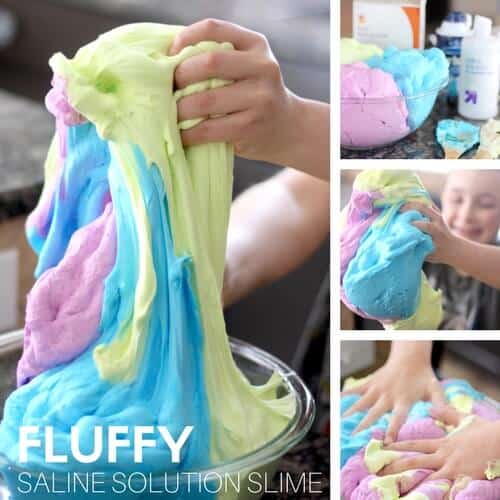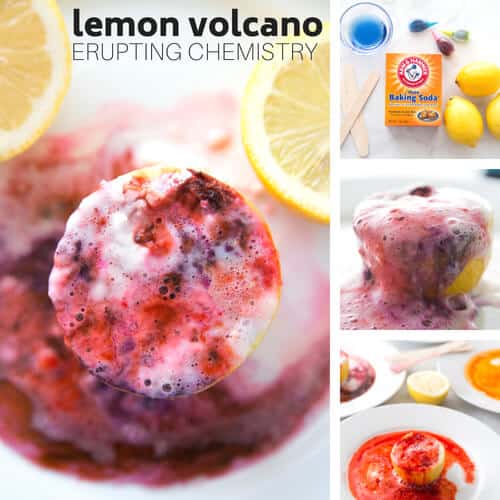What does the ocean floor look like? Inspired by scientist and map builder Marie Tharp, make your own relief map of the world. Represent the topography or physical features on land and the ocean floor with easy DIY shaving cream paint. Introduce kids to the fun of mapping with this hands-on ocean map activity. We love doable and simple ocean activities and geology for kids!
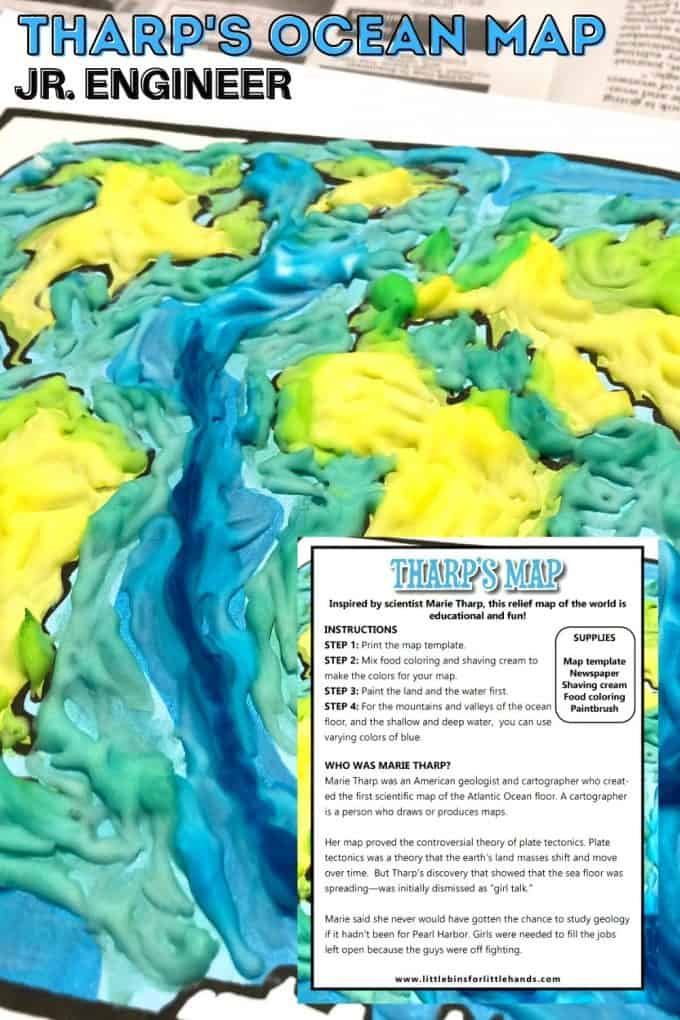
Who Was Marie Tharp?
Marie Tharp was an American geologist and cartographer who along with Bruce Heezen, created the first scientific map of the Atlantic Ocean floor. A cartographer is a person who draws or produces maps. Tharp’s work revealed the detailed topography or physical features and 3D landscape of the ocean floor.
Her work proved the controversial theory of plate tectonics. Plate tectonics is a theory that the earth’s land masses shift and move over time. Tharp’s discovery of a rift valley showed that the sea floor was spreading—it was initially dismissed as “girl talk.”
Make an edible plate tectonic model to learn more.
Marie said she never would have gotten the chance to study geology if it hadn’t been for Pearl Harbor. Girls were needed to fill the jobs left open because the men were off fighting in the war.
Create your own multi-dimension map of the continents and ocean floor with our free printable topographic world map below. Let’s get started!
Learn more about mapping with this latitude and longitude activity.
Free Printable Map The Ocean Floor Project
Map The Ocean Floor Activity
Supplies:
- Printable map template
- Newspaper
- Shaving cream
- Food coloring
- Paintbrush
- Read this book! (Amazon Affilaite Link)
Instructions:
STEP 1: Print the world map template.
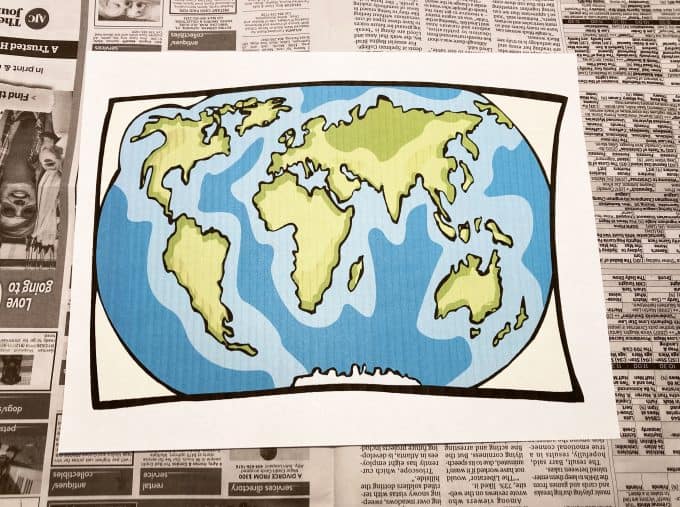
STEP 2: Mix food coloring and shaving cream to make the colors for your map.
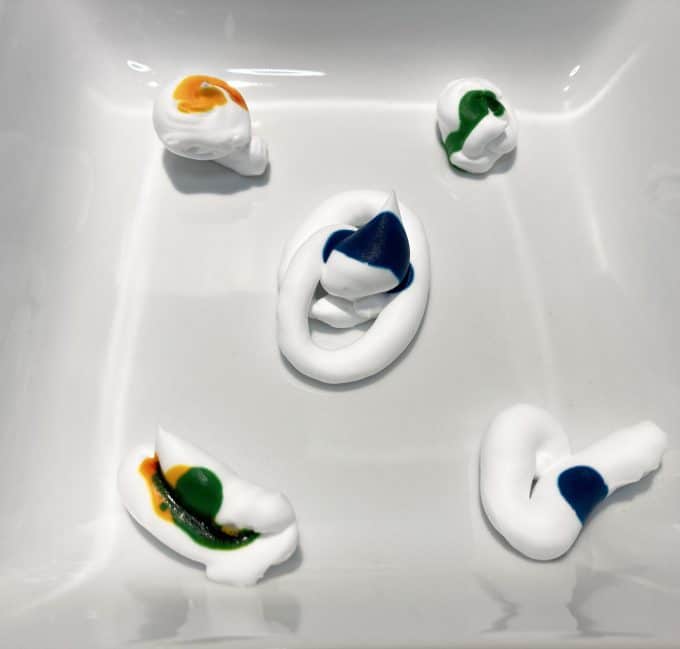
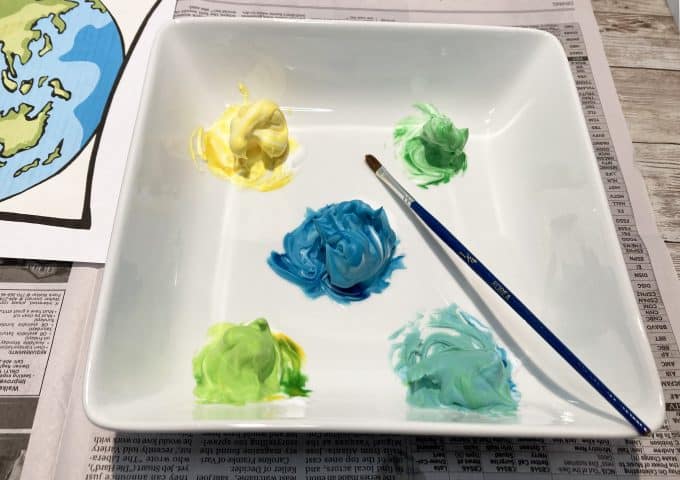
STEP 3: Paint the land first. The colors you use are related to topographic height, with green at the lowest level, rising through yellow and tan, to white at the highest elevations.
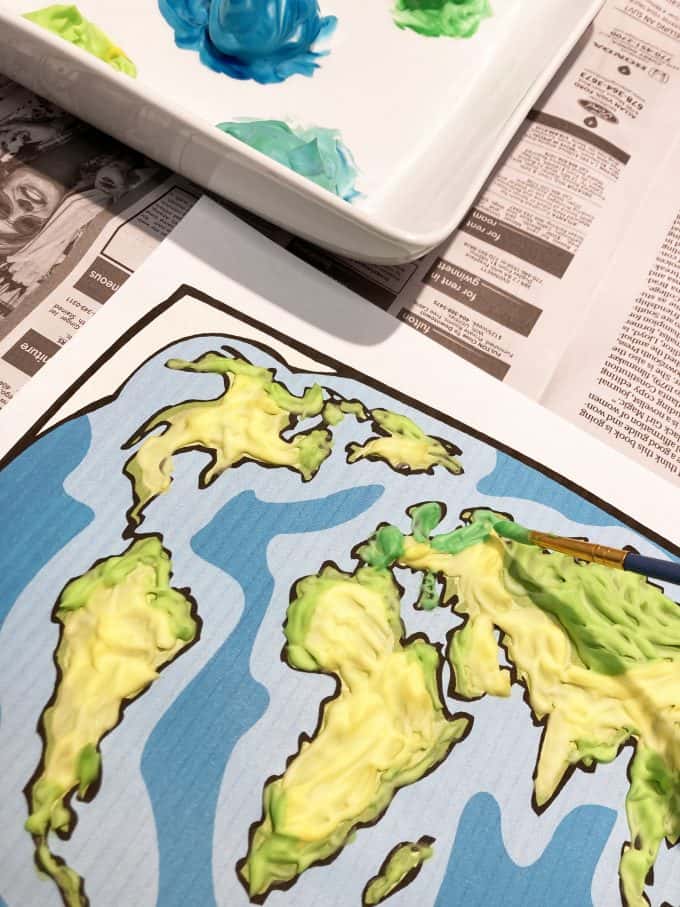
STEP 4: Next paint the water. For the ridges and trenches of the ocean floor, and the shallow and deep water, you can use varying colors of blue.
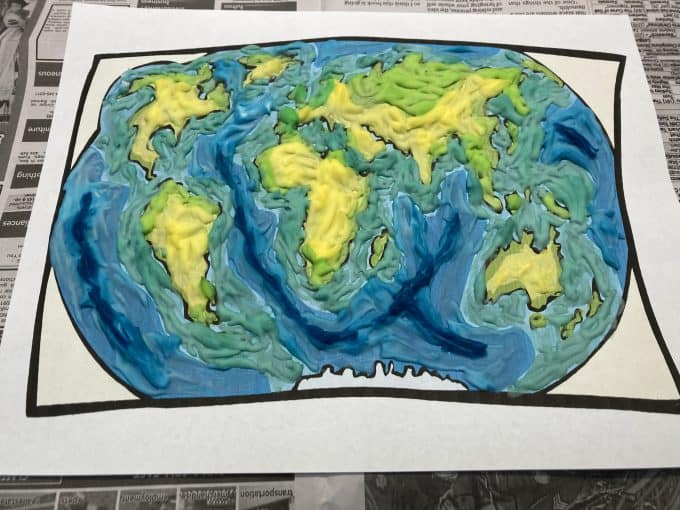
STEP 5. Put aside your finished map to dry. Make sure to talk about what the different colors represent on your map!
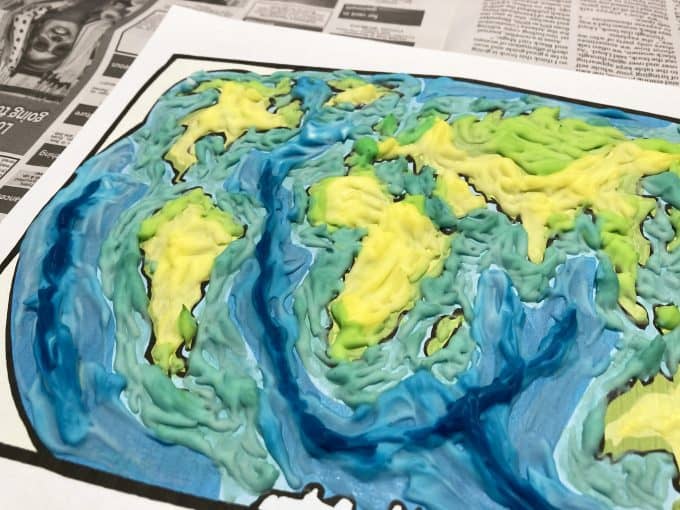
FREE Printable Ocean Activities Guide!
More Fun Ocean Activities
Find our complete list of ocean activities for science, STEM, and art here!
- How Do Squid Swim?
- Oil Spill Cleanup Experiment
- Beach Erosion Demonstration
- Ocean Waves In A Bottle
- Layers of the Ocean
- Ocean Currents Demonstration
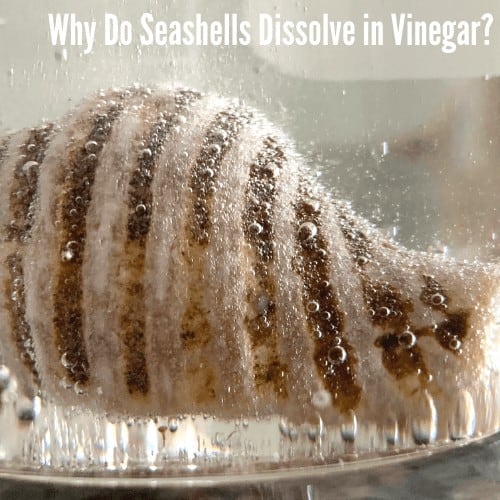
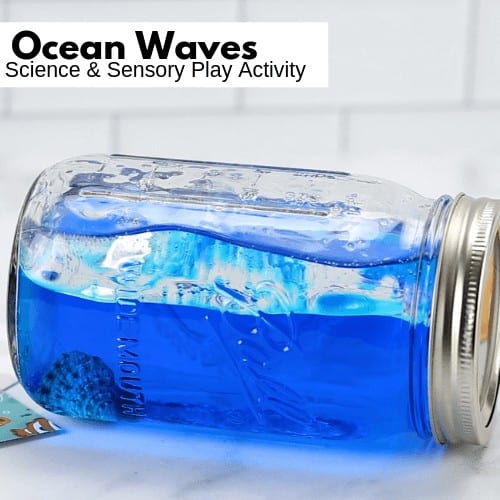
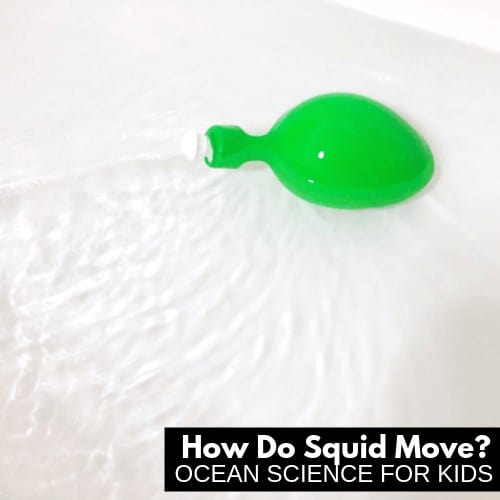


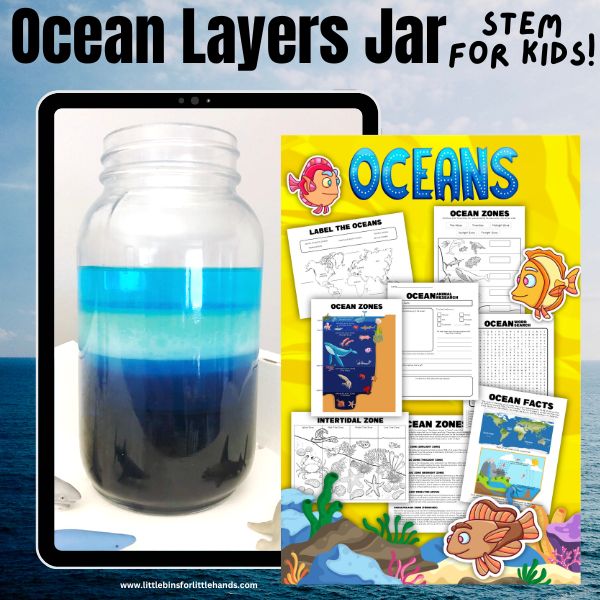
Printable Ocean Activities Pack
If you want to have all of your printable ocean activities in one convenient place, plus exclusive worksheets with an ocean theme, our 100+ page Ocean STEM Project Pack is what you need!
Check out The Complete Ocean Science and STEM Pack in our SHOP!
